
BMW 5 Series vs 5 Series LCI: What’s Different?
- Nov 17, 2020
- Views : 5872

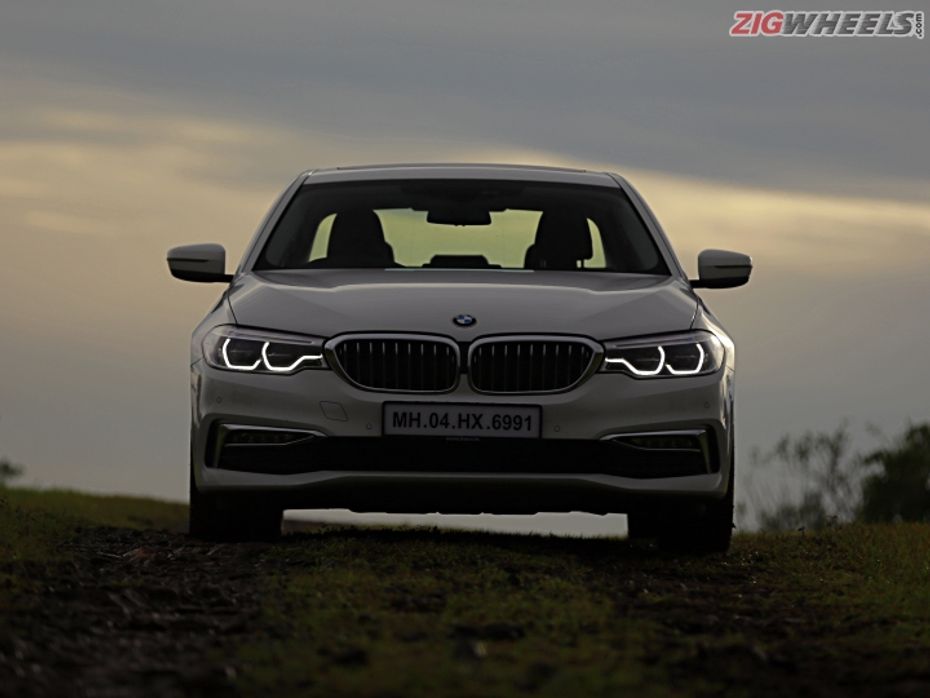
The BMW 5 Series has had a difficult job of late, trying to take on competition which has increasingly been focussing on backseat luxury, but at the same time, retaining the drivers' car flavour expected from any car bearing the blue and white roundel. The last generation 'F10' model left many enthusiasts slightly disappointed with its softer handling setup, while those who wanted more rear seat space had their wishes just barely fulfilled.

The new 'G30' 5 Series aims to address the criticisms of the previous model and offer a lot more in the process. BMW claims that this new 5 Series is larger, lighter, better to drive, more efficient, more luxurious and better equipped than before. And to find out if they’ve been able to deliver on that promise, we took the mid-range 2.0-litre diesel-powered 520d 'Luxury Line' variant for a test drive.
Not achingly beautiful
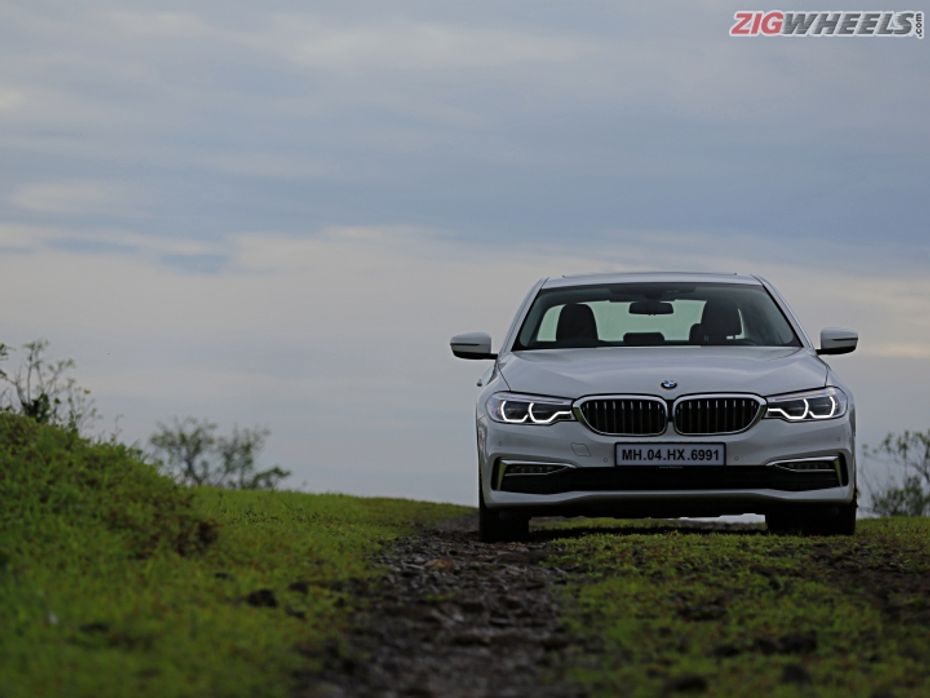
The new 5 Series is based on the same platform as the 7 Series that allows it to be 36mm longer, 6mm wider, 2mm taller and have a 7mm longer wheelbase than the model it replaces. Visually though, that increase in dimension is not immediately noticeable. Blame it on the 'family design' theme adopted by almost all car manufacturers today, thanks to which the 5 Series looks a bit like a wider BMW 3 Series from the front.
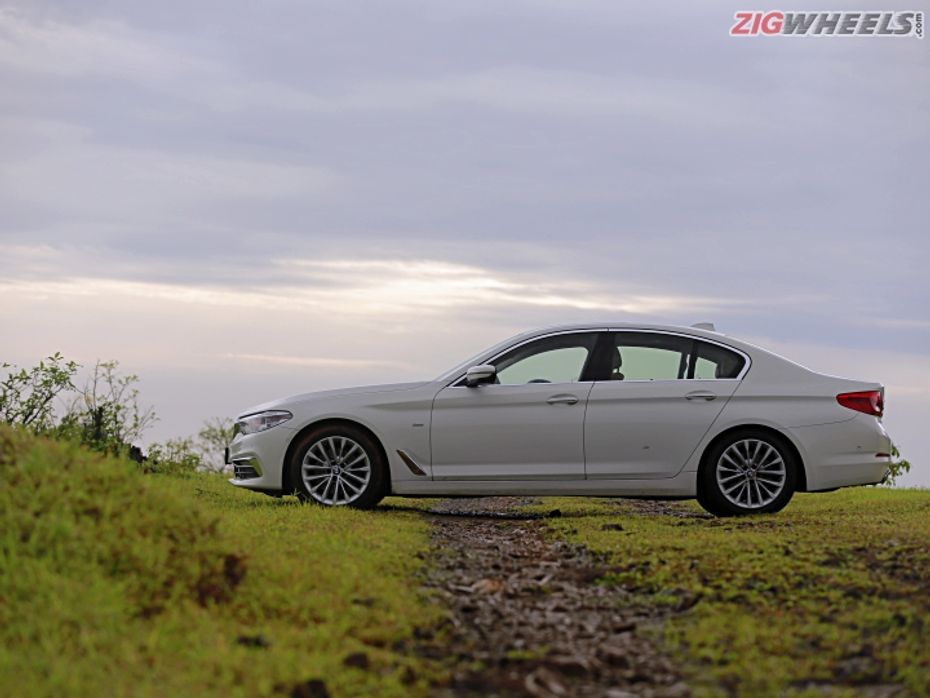
The side profile borrows some elements from the larger BMW 7 Series, especially the ice-hockey stick toe highlight just behind the front wheel arches. The 5 Series now has lost a bit of the cab rearward stance now that the roof flows more smoothly into the rear and the boot sticks out more than before. The long hood, large cabin and longer boot give the 5 Series a more traditional sedan look.
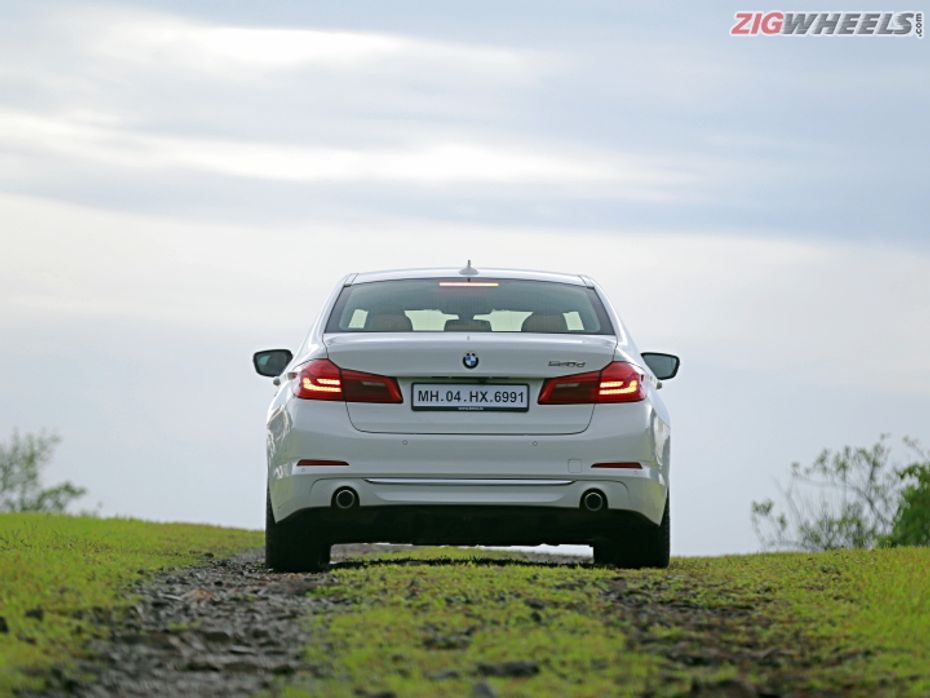
It is from the rear three-quarters and rear from where the 5 Series is most recognisable, and differentiable from the 3 and the 7. The dual tailpipes add a bit of flourish to the otherwise reserved design.

This 'Luxury Line' variant gets subtle highlights all around. The chrome kidney grille and air dam highlights, window surrounds and rear bumper highlight are quite understated. The 'W-spoke' 18-inch wheels continue the elegantly subdued theme. Combined with sedate Alpine White paint, the 5 Series forces you to look multiple times to appreciate its tight body design.
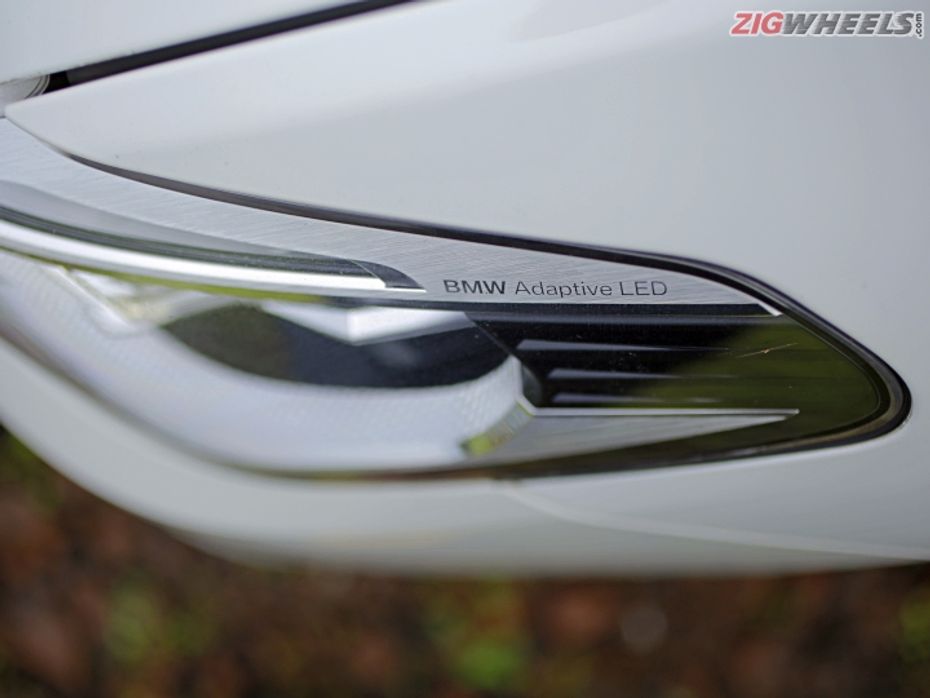
It would also take a double take to realise that the 520d is offered with all-LED adaptive (read self-dimming) headlights. The taillights now look slimmer and wider, with the red OLED position lamps at the back redesigned as well.
Feel like a kid again
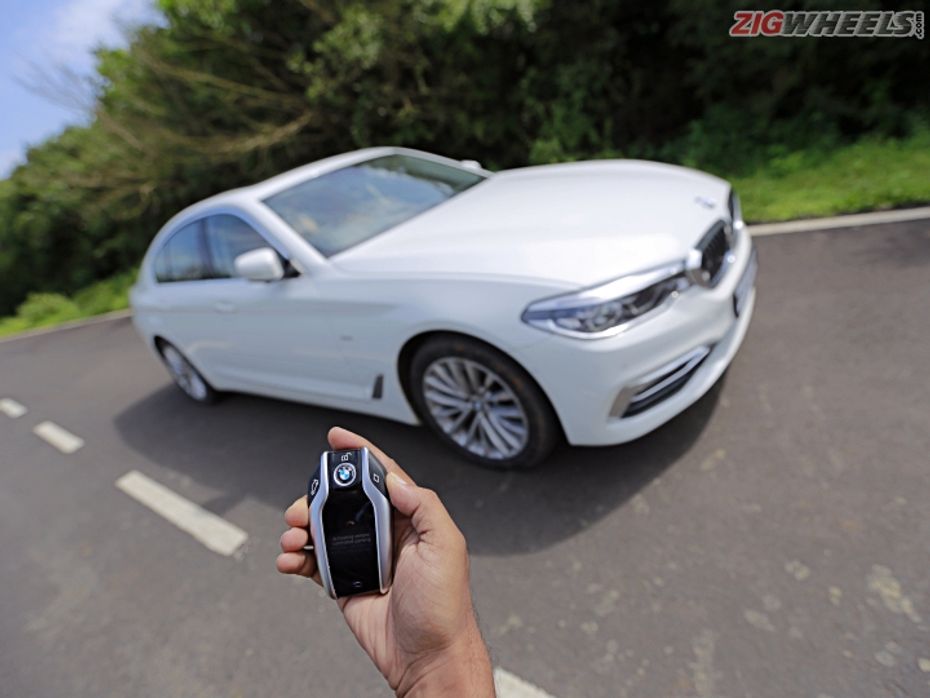
While the 520d does get a keyless entry system, it is impossible not to fiddle around with the BMW Display Key that is offered as standard. Apart from the usual lock/unlock function, the touchscreen-equipped key also allows you to pre-heat/pre-cool the cabin and check the estimated range. Its party trick though, is the remote parking function, which can be used to drive the car forward or backwards into a tight parking spot from the outside - it's one of the two gimmicky features on the new 5'er. That said, this remote parking function is very finicky and time-consuming, limiting its practicality. We know you can do better BMW; you previewed a better system on James Bond's 750iL way back in 1997!
Love that brown
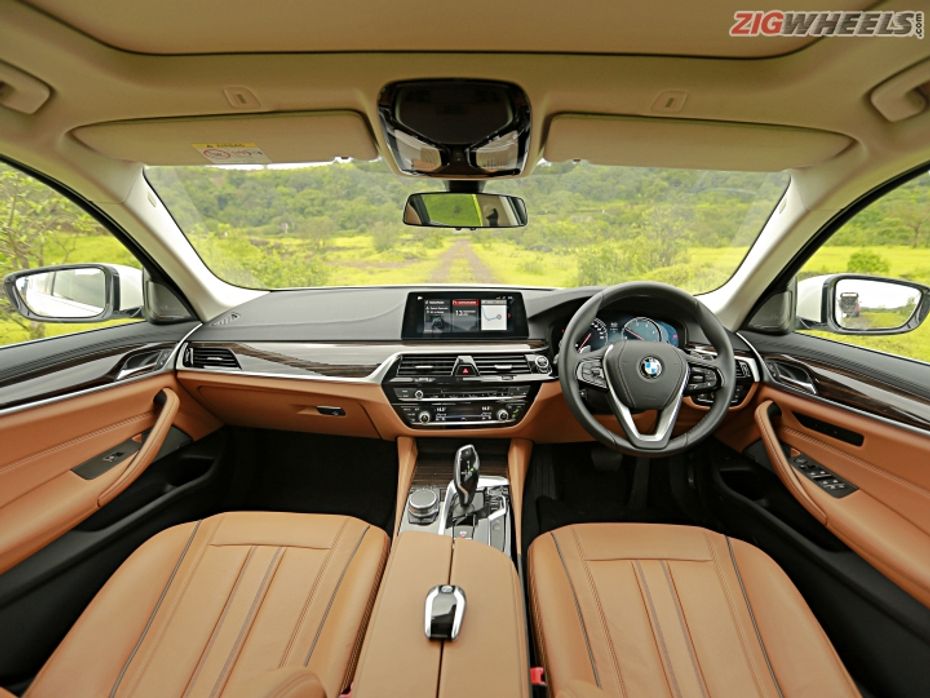
In contrast to the rather sedate exteriors, the 520d's interior is quite an exciting place to be in - especially if you are sitting at the front. The combination of soft-touch black plastics, wood trim, aluminium highlights and the 'Cognac' (brown) leather upholstery with black stitching and piping give the whole cabin a rich, luxurious feel. The dashboard feels less bulky than before, especially because it is now not as tall. This has let the 10.25-inch central touchscreen display be a freestanding unit, which has allowed designers to taper the dashboard towards the passenger side, letting in more light and increasing the feeling of spaciousness.
The gadgets
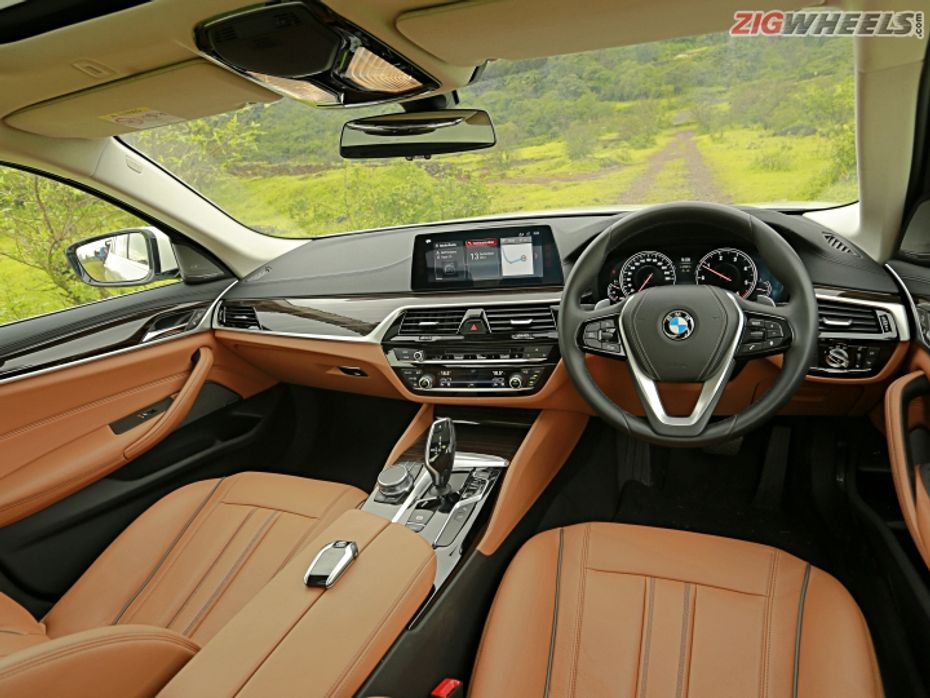
It is clear that the interior of the 5 Series has been inspired by the one in the 7. Unlike the flagship though, the centre console on the 5 is tilted very noticeably towards the driver, reiterating the fact that this is still a drivers' car. The cabin also has an air of familiarity to it. People who have been inside BMW cars before will instantly feel at home. What is new is that freestanding centre display, a simpler multimedia control module under the central A/C vents and an equally minimalistic A/C control module with touch-sensitive buttons. The all-digital instrument cluster has been carried over from the previous car and has custom displays depending on the drive mode chosen.

The new iDrive 6 rotary controller is now larger, its top surface is touch sensitive and recognises handwriting inputs. The touchscreen display now gets smartphone-like active tiles and, like in the 7 Series, can be controlled via gestures. While initially amusing, the gesture controls need more refinement to be intuitive. The screen also doubles up as a display for the brilliant 360-degree parking camera system which uses an array of 4 cameras and intelligent image stitching to create a panoramic display of your surroundings. Given the unprecedented number of viewing angles, parking your car is a rather fun exercise.

As luxurious as most of the surfaces inside the car feel, the touch controls for the A/C, the plastic button to select drive modes and the power window buttons feel a little less premium than the other switchgear used around the cabin.
Sink in
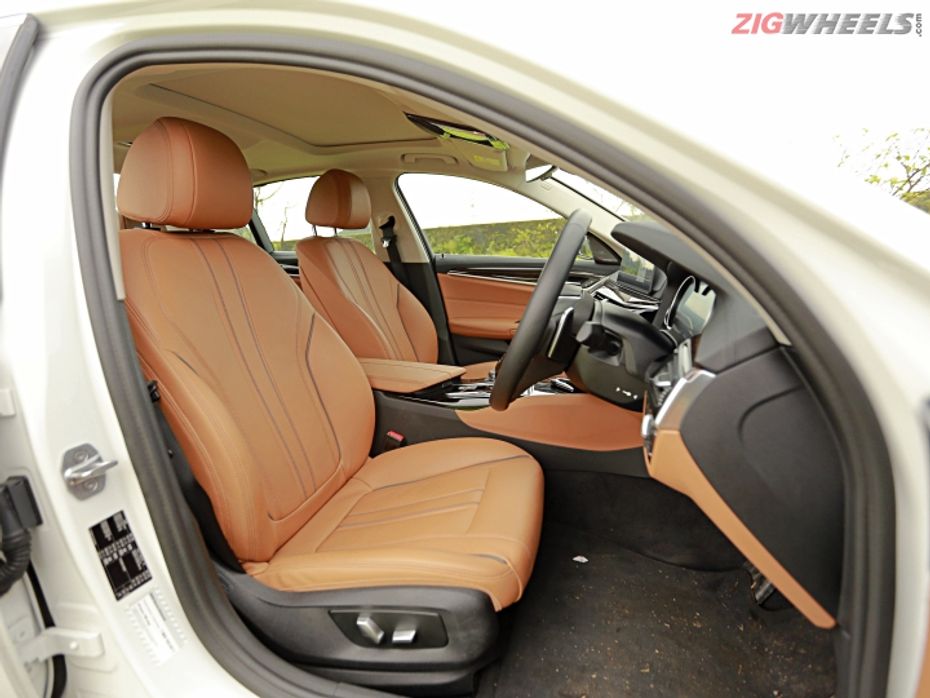
The front seats are electrically adjustable, with a memory function for the driver's seat. The steering wheel is electrically adjustable too, for reach and rake, which combined with customisable seating posture help the driver get into a comfortable driving position very easily. Everything falls to hand easily here, and there are no ergonomic issues to speak of.
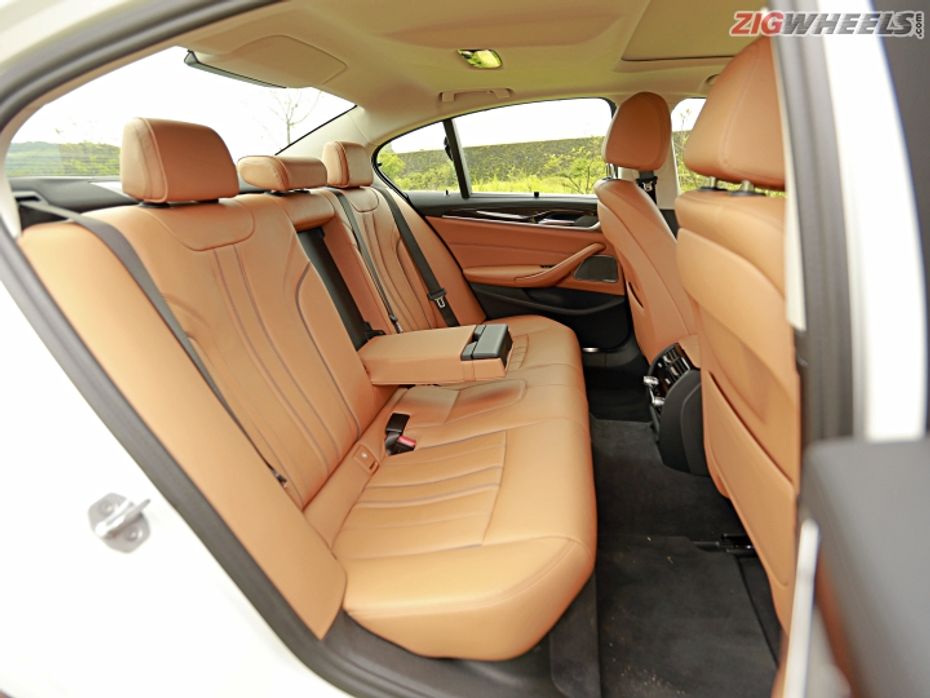
The rear bench feels plush and there is ample knee-room and legroom even when 6-footers occupy the front seats. While the rear seat space in the 520d cannot hope to match the long-wheelbase Mercedes-Benz E-Class, it does not feel cramped in any way. The dual-zone A/C for the rear passengers, including the two centre A/C vents and B-pillar vents help cool down the rear cabin quite quickly. An indiscernible scooped out section above the rear passenger’s head increases the available headroom even though the roof slopes down aggressively. The windowline is low enough to let in a lot of light for better ambience while the large sunroof lights up the cabin nicely when opened. On the flip side, there are sunblinds for the rear windshield (electrically deployable) and rear windows (manually deployable). At night, the multi-coloured ambient lighting system helps the interior look even more special.
Wait a minute
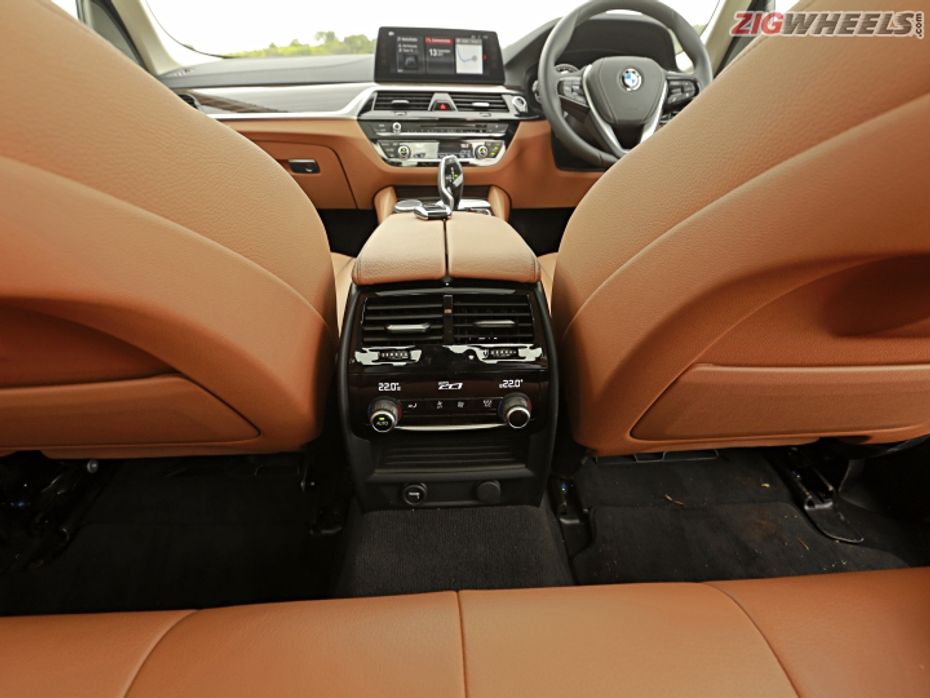
If you look at the options list, you will notice some irregularities. The less expensive 520d Sport gets better front seats which can be adjusted for width too, while the more expensive 530d M Sport gets lumbar adjustable front seats. The 530d also gets 40:20:40 split folding rear seats, which we believe should have been offered on this, the ‘Luxury’ trim. The rear seats of the 520d could also have been made a lot more fun if the rear entertainment package, consisting of two large infotainment screens, was offered as standard as is the case on the 530d.
Performance
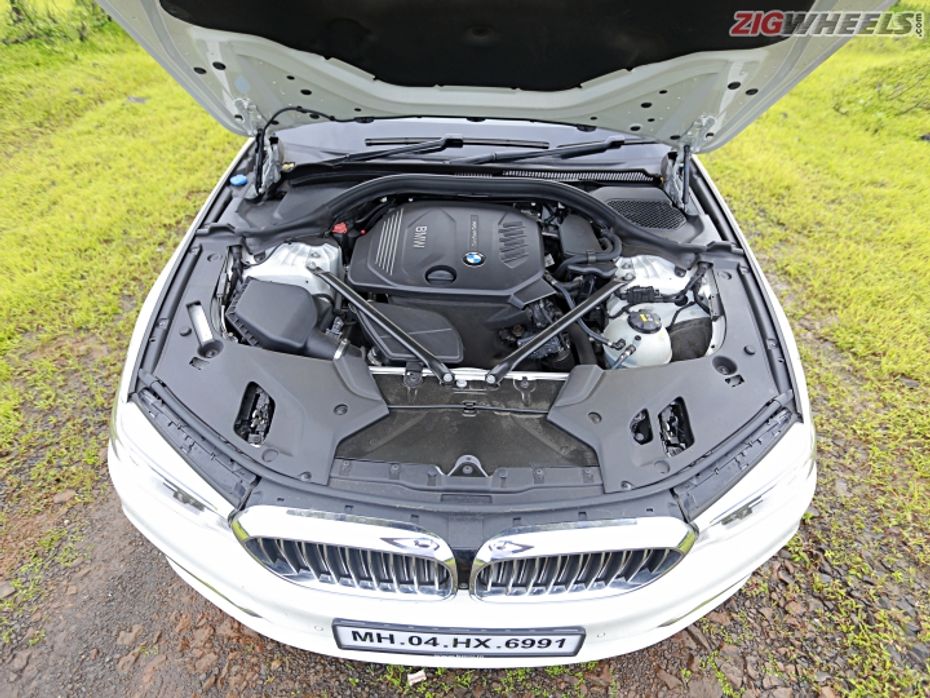
The 520d is powered by a 2.0-litre, 4-cylinder, turbocharged diesel unit that sits way back in the engine compartment. Power is sent to the rear wheels via an 8-speed automatic transmission which can be controlled via paddle shifters located behind the leather-wrapped steering wheel. While the engine-transmission combo is not new to the 520d, it feels quite different in this new car. The vibrations and noise from the engine are very well damped on the inside, which can be attributed to the use of more sound deadening materials. The only time the engine makes itself known is when you push down hard on the throttle pedal and the engine revs closer to its 5,000rpm limit. The gearbox at other times shifts up around the 2,000rpm mark to keep the cabin quite silent. And if it feels spookily quiet, you can always listen to music through the 16-speaker 600W Harman Kardon surround system.

There are four driving modes to choose from - Eco Pro, Comfort, Sport and Adaptive. Selecting any of these changes the engine response, transmission reactiveness and steering feel. The 5 Series, unlike the competition, is also offered with adaptive suspension as standard with two distinct modes to choose from - Comfort and Sport. Combined, these have very noticeable effect on how the 520d feels.
Triple personalities
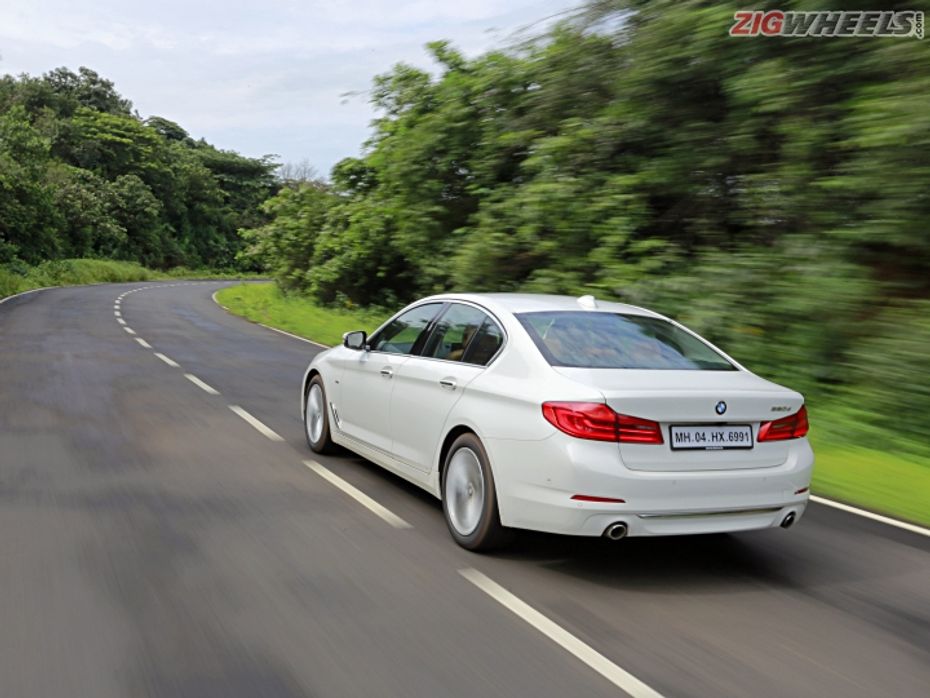
In Eco Pro mode, the engine seems throttled down, the gearshifts are leisurely and the suspension handles all but the nastiest road imperfections without a squeak. The instrument cluster has a dedicated display with the speedo limited to 80kmph and an average efficiency gauge. Combined with a start/stop system, the 520d ekes out decent mileage - we managed to extract 13.51kmpl from it in the city and 19.29kmpl on the highway. While these are nowhere close to the 22.48kmpl figure claimed by BMW, they’re really not bad for a car of its size.
In comfort mode, the engine responds quicker but everything else is designed to keep occupants as comfortable as possible. The great thing is that the 5 Series never seems to get wallowy even if you are driving at triple digit speeds.
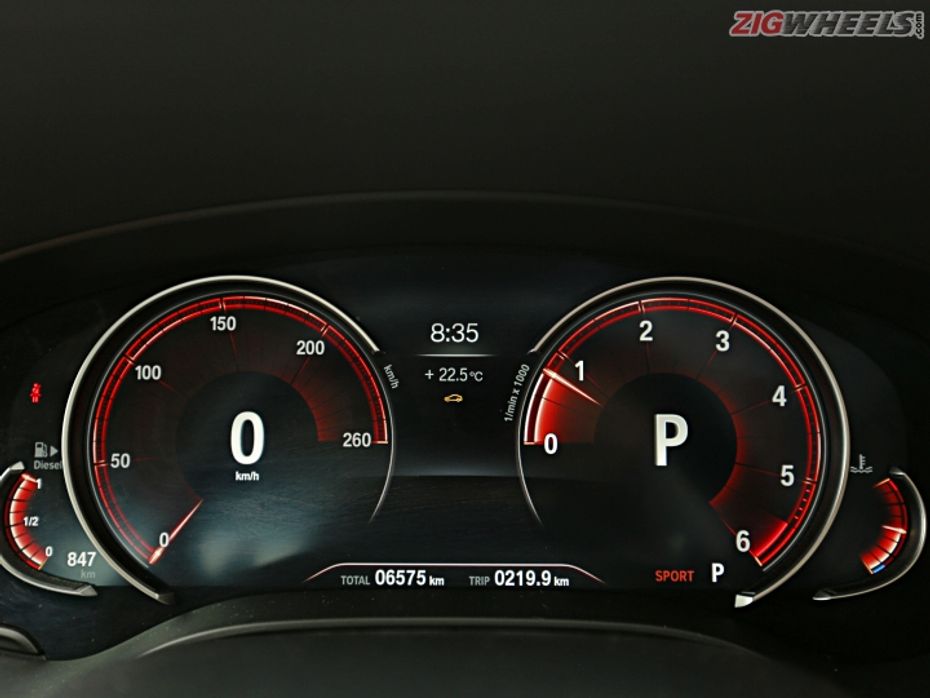
Select ‘Sport’ and the 5 Series really transforms. The accelerator pedal reacts to your right foot instantly, the gearbox holds the revs for longer and lets the engine growl all the way to the redline if you keep your foot pinned to the floor. Understandably, the 520d does not pin you to your seat if you floor it, the 4-cylinder turbocharged motor is tuned for a smooth delivery power; 0-100kmph is achieved in 8.01-seconds. The suspension too feels tauter and the steering feels more connected to the front wheels. Even if you’re in Sport mode when driving in slow moving traffic, the transmission is smooth, however, the throttle does have the tendency to make the car lurch forward. The ‘Adaptive’ mode changes the driving mode and suspension mode depending on throttle and steering inputs of the driver and does a decent job of adjusting the car's’ systems on the fly.
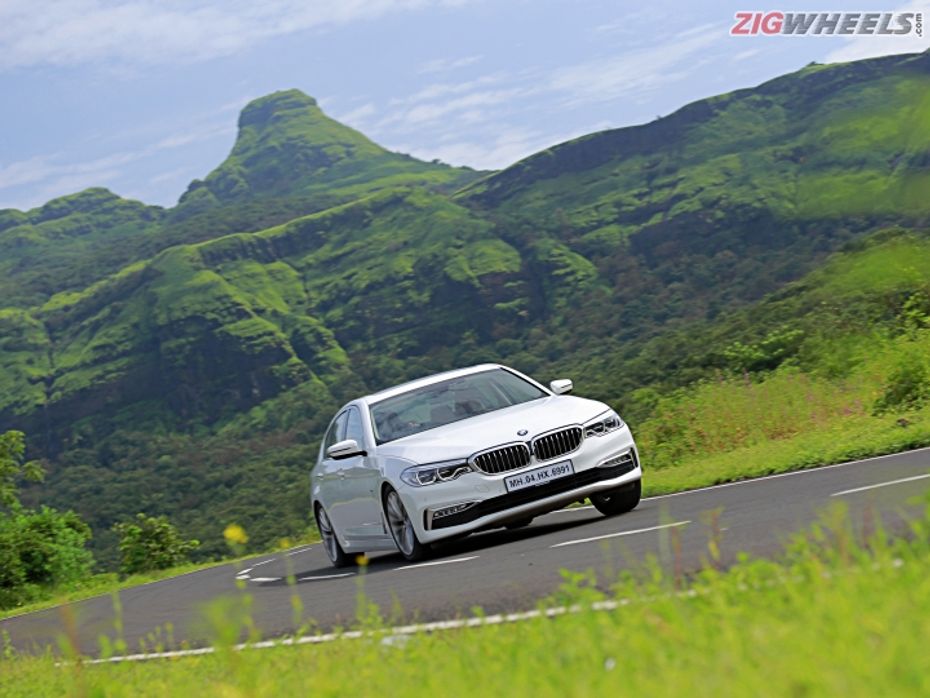
The ride and handling qualities of the 520d made at least some testers in the office exclaim that BMW is coming back to form. While the suspension is never sportcar like stiff, it strikes a good balance of being comfortable and sporty at the same time. In Sports mode, it doesn’t allow any body roll if you pitch it hard into corners, but surprisingly it doesn’t crash through potholes either. The steering also firms up well in Sports mode, weighing up progressively as speeds increase and there isn’t a hint of vagueness even at high speeds.

Some of its ride characteristics can also be attributed to lower kerb weight and unsprung mass. The extensive use of aluminium in the chassis and bodywork, as well as electronic actuators instead of hydraulic sway bars have reduced kerb weight of the 520d by almost 100kg as compared to its predecessor! The way this car dispatches corners, in spite of being almost 5 metres long is mind boggling.You can switch off the traction control to enjoy some sideways action if necessary, though it’s not the easiest thing to get the tyres to break traction. The 245mm-section tyres have to be pushed hard to make them protest and finding the limit of their grip under normal driving conditions is quite difficult.
Coming back to the question
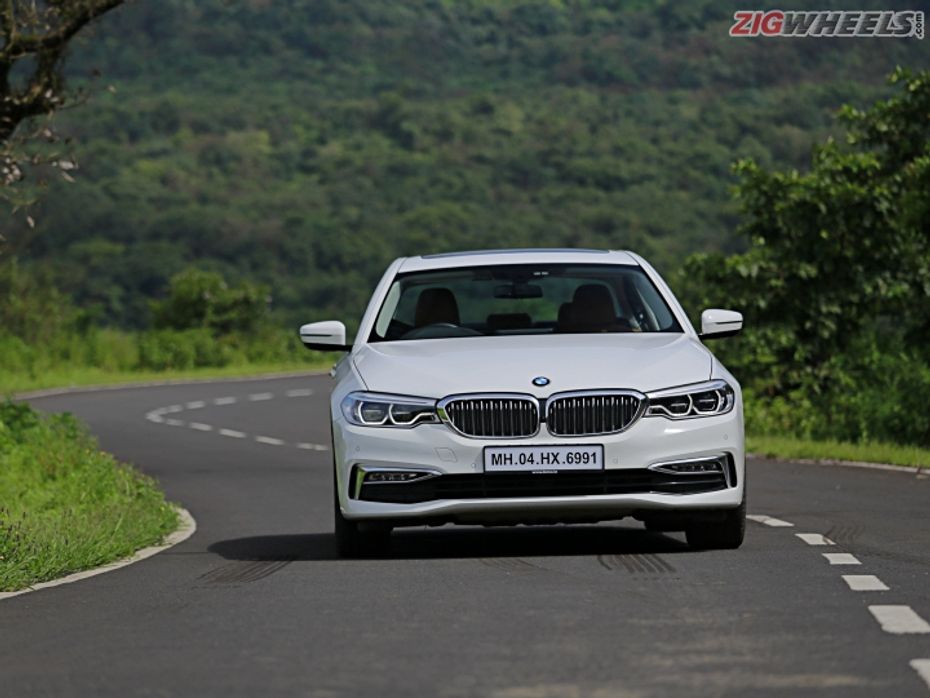
Does the new 520d manage to find a good balance between the responsibilities of luxury and sportiness better than before? Yes! Is it better than the competition in doing so? Yes! But its competition is not exactly worried about being sporty to drive and that is where the 520d earns brownie points and stands apart from them. Here’s a 50-odd lakh Rupee car that you can be comfortably driven around when you want to and be confident enough to chuck around the twisties when you’re in the mood for a bit of fun.
Spec Check
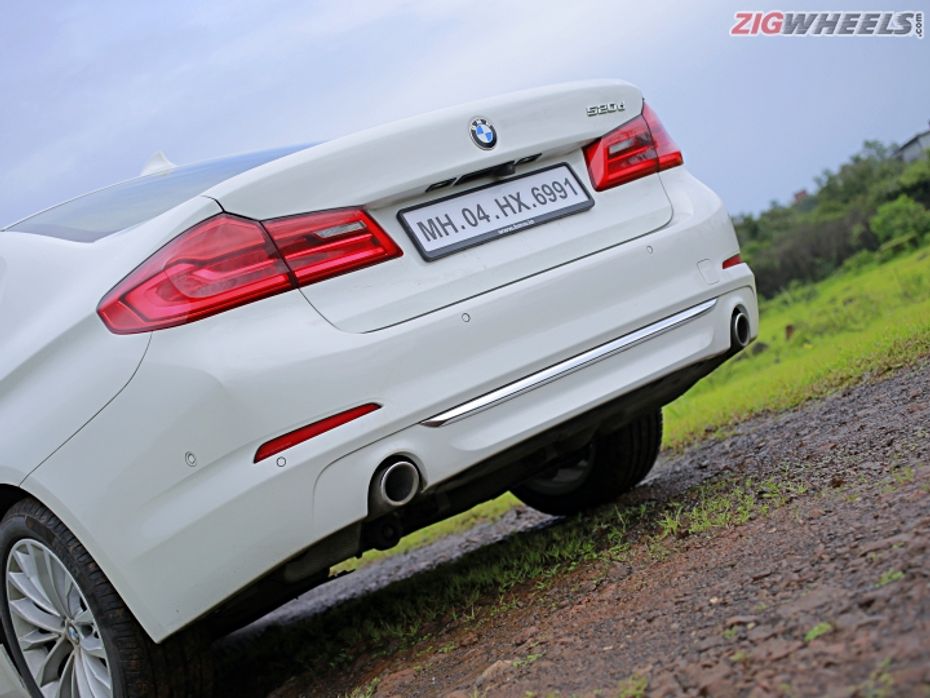
Engine: 2.0-litre, inline 4-cylinder turbo-petrol
Power: 190PS @ 4000rpm
Torque: 400Nm @ 1750-2500rpm
Transmission: 8-speed automatic
0-100kmph: 8.01 seconds
100-0kmph: 3.06 seconds / 38.98 metres
Mileage: 13.51kmpl (City), 19.29kmpl (Highway), 22.48kmpl (ARAI)
Price: Rs 55.80 lakh (ex-showroom pan-India)
Photographs: Vikrant Date

BMW 5 Series vs 5 Series LCI: What’s Different?

All-New BMW 5 Series Variants Explained

New BMW M5 Is The Quickest M Ever

BMW 740li: Road Test Review
 Audi A6
Audi A6
India's largest automotive community
 BMW M5
Rs. 1.99 Crore
BMW M5
Rs. 1.99 Crore
 BMW X1
Rs. 50.80 Lakh
BMW X1
Rs. 50.80 Lakh
 BMW X7
Rs. 1.29 Crore
BMW X7
Rs. 1.29 Crore
 BMW X5
Rs. 96.00 Lakh
BMW X5
Rs. 96.00 Lakh
 BMW i7
Rs. 2.03 Crore
BMW i7
Rs. 2.03 Crore
 Land Rover Range Rover
Rs. 2.36 Crore
Land Rover Range Rover
Rs. 2.36 Crore
 Mercedes-Benz GLA
Rs. 50.80 Lakh
Mercedes-Benz GLA
Rs. 50.80 Lakh
 Toyota Vellfire
Rs. 1.22 Crore
Toyota Vellfire
Rs. 1.22 Crore
 Porsche 911
Rs. 1.98 Crore
Porsche 911
Rs. 1.98 Crore
 Land Rover Range Rover Velar
Rs. 87.90 Lakh
Land Rover Range Rover Velar
Rs. 87.90 Lakh